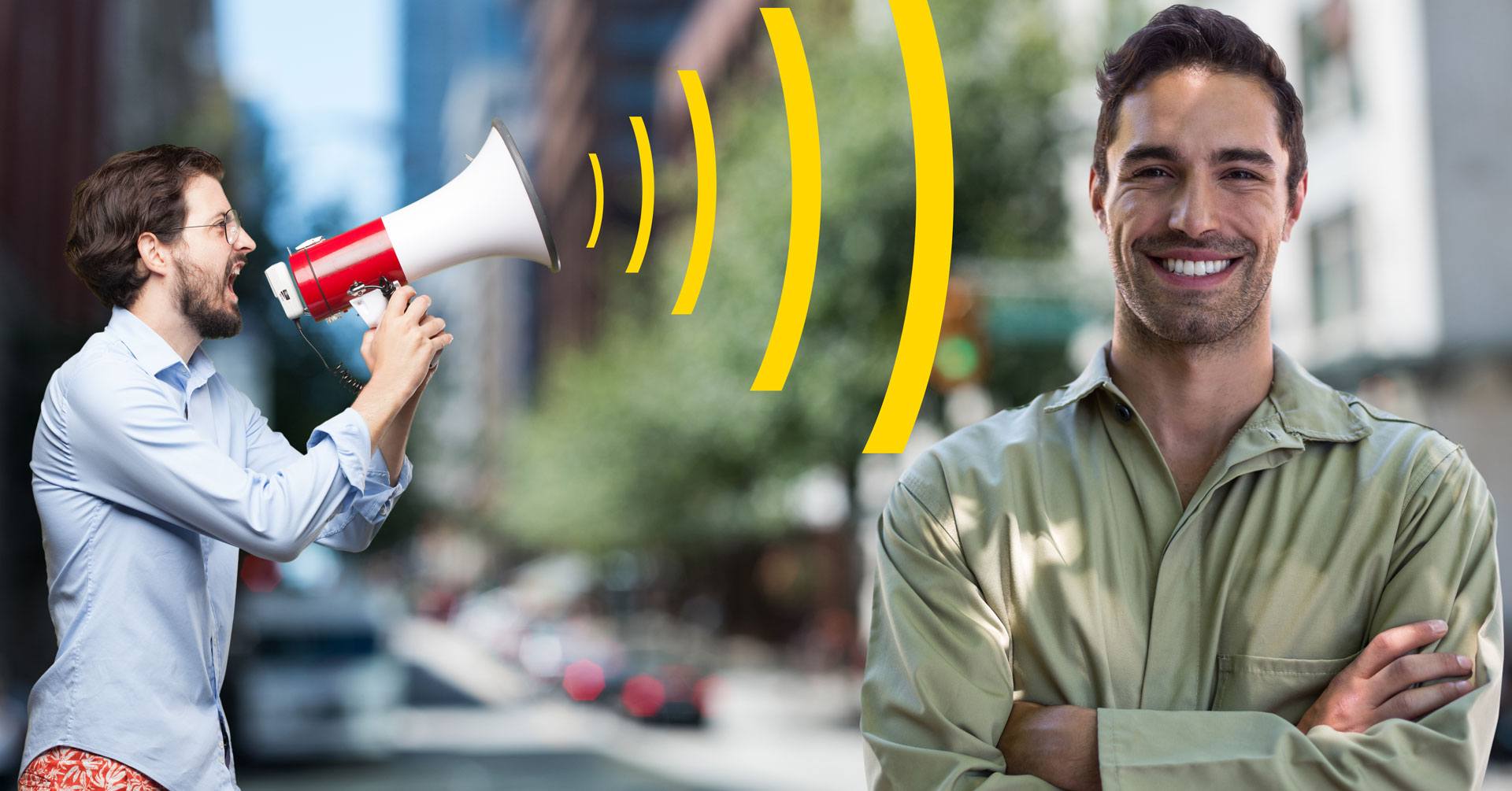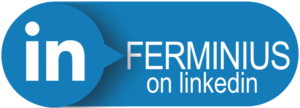

Inbound and outbound definition.
The Speaker and The Magnet
Inbound Marketing vs Outbount Marketing. How many times have you been followed nonstop by a product on the internet? Well, that is a remarketing list poorly made, that is a brand screaming “Buy, buy”. It’s the perfect way to “Not” make a sale, at least, right now.
The Outbound Marketing is that traditional external advertising, TV, radio, massive, incontrollable, immeasurable and more importantly more expensive, direct and invasive, centered on the product and its benefits.
The Inbound Marketing, on the other hand, is that voice over our shoulders that keeps telling us what we want to hear, the one that, apparently, doesn’t sell us anything and it’s only interested in creating value, knowledge and quality content for us. This is center on the person and even though what’s at the end of the road is a conversion, a lead, obtaining personal data or a purchase action, it’s centered on the process and the person.
There’s a big leading character in these two processes, content, and that is my personal vision. Every person has a particular way of interacting with reality and the content that they consume is the gate to this interaction, while the person is interacting with it, it’s also creating interests, behavioral, philosophic and consumption habits social networks.
Inbound and outbound marketing.
The Internet is one of the places where the differences between Inbound and outbound Marketing are more notable. The internet is the network that tends to boost most of the things, so if still the differences between Inbound and Outbound Marketing aren’t clear for you, on the Internet is where you’ll find most of their differences.
Marketing Inbound vs outbound, a little bit of history.
The history of these two Marketing types, even though I would love it, doesn’t date from Ancient Rome. NO! Its origins are rooted, as many others, in the internet, on a very recent date, the year 2005. Brian Halligan co-founder and CEO of HubSpot invented the term “Inbound Marketing”, however the term became popular years later when the book “Inbound Marketing: Get Found Using Google, Social Media and Blogs, written by Halligan himself, was published. The merit is shared without a doubt. Another one of the big influencers of this methodology was David Meerman Scott with his book “The New Rules of Marketing and PR” a work where he approaches this new “ecosystem” vision that 2.0 tools such as blogs and social media have added to the philosophy of our contemporary era.
Here we find an amount of terms that are worth observing. Throughout the social development of our specie we’ve moved in a slow pace, is now when we have inflicted a higher level of efficiency to our movement. Different from our predecessors of the renaissance, let’s say that today we can’t speak of network philosophers but of “Influencers” a term that in my opinion limits the action range of these figures to the simple “influence”, but in this case they are influencing thousands if not millions of people. If on the XVIII century in the middle of the Illustration we could speak of Philosophers (journalists like Marath), today is not possible to speak of these kinds of figures and limit them to “Influencers”.
The history of these two Marketing types, even though I would love it, doesn’t date from Ancient Rome. NO! Its origins are rooted, as many others, in the internet, on a very recent date, the year 2005. Brian Halligan co-founder and CEO of HubSpot invented the term “Inbound Marketing”, however the term became popular years later when the book “Inbound Marketing: Get Found Using Google, Social Media and Blogs, written by Halligan himself, was published. The merit is shared without a doubt. Another one of the big influencers of this methodology was David Meerman Scott with his book “The New Rules of Marketing and PR” a work where he approaches this new “ecosystem” vision that 2.0 tools such as blogs and social media have added to the philosophy of our contemporary era.
Here we find an amount of terms that are worth observing. Throughout the social development of our specie we’ve moved in a slow pace, is now when we have inflicted a higher level of efficiency to our movement. Different from our predecessors of the renaissance, let’s say that today we can’t speak of network philosophers but of “Influencers” a term that in my opinion limits the action range of these figures to the simple “influence”, but in this case they are influencing thousands if not millions of people. If on the XVIII century in the middle of the Illustration we could speak of Philosophers (journalists like Marath), today is not possible to speak of these kinds of figures and limit them to “Influencers”.
What is an influencer?
An influencer is a person that has and keeps “captive” a big group of people, between 10.000 and 6 millions. Unimaginable numbers for our predecessors of the illustration. The most curious thing is that segmentation has reached such a point that an influencer could be a Pokemon catching expert or an art and writing expert analyzing new generation’s texts, both with the same ability of moving criteria and impact over the public opinion about any topic (Marrat is probably turning in his grave) Here’s where the second type of marketing comes in; the “Outbound” and those are the traditional ways that fight to stay afloat,… that payed Radio advertisement, TV, billboards, etc. The Outbound Marketing is a traditional option where is very difficult to control the ROI (Return of Investment) and where you can even incur to media that resist this type of definition, such as the payed advertisements of google AdSense.
Aggression vs Seduction
How the Client sees it. It’s very simple “buy me” vs “Seduce me”. That is the question. If the product follows you, attacks you, invades you is an Outbound type of Marketing. Instead if it seduces you, makes you relate to it, builds a joint love and need relationship, well that’s the second type of marketing, the Inbound Marketing. “Turning your interactions in conversations and the conversations in transactions” The main character in this case is the content; the important point of Inbound Marketing is the content, the creation of value. If your client doesn’t receive value, doesn’t receive a valuable content, if you don’t add something, it has the choice of leaving because the constant content’s bombing is enormous. The biggest example of the leadership of the media and the content is that the figure of an influencer that from a Youtube Channel was hired to manage the schedule of a company like HBO.

The engagement and the audience.
Currently the segmentation can be “Micro-segmentation” located and guided to the essence of the human group that we want to speak to. Previously we spoke to many (and of course payed for it) to convince one. Today we speak to “one” to convince many. That’s the difference. Why did you choose the phone you have? Who led you to the shoe brand you’re wearing? How did you think in the moment you were a consumer? That’s the key to locate the necessity, stablish the solution and the rest… is MARKETING.
1. The Influencer. This figure doesn’t have a necessary direct relationship with the object or product. This figure induces “emotionally” the second element.
2. The History-Teller This is the second figure that is emotionally affected by the influencer and this figure does have a direct relationship with the object or product.
3. The Tellers. These are consumers of the product and are emotionally linked to the product. Are enabled by the History-teller but because of their emotional relationship with the product… they are very close to the purchase action, which is what you are aiming for.
Different from the content chains from not that long ago where we impacted thousands of people without knowing how to get feedback on every penny we invested, now the contents impact the people with just the right profile and the feedback is received the same way, in a segmented manner where we can even see the “search funnels”, that are the steps followed by our user to finish the conversion, that means, to make the purchase, the download or the direct contact with our content.
We are in front a new point of view for Marketing and in front of a new audience, without a doubt, more specialized and that is being constantly bombed with content. We are in an era where content is the king.
Locations.
![Ferminius [marketing] 1](https://ferminius.com/wp-content/uploads/2019/03/west-300x271.png)









